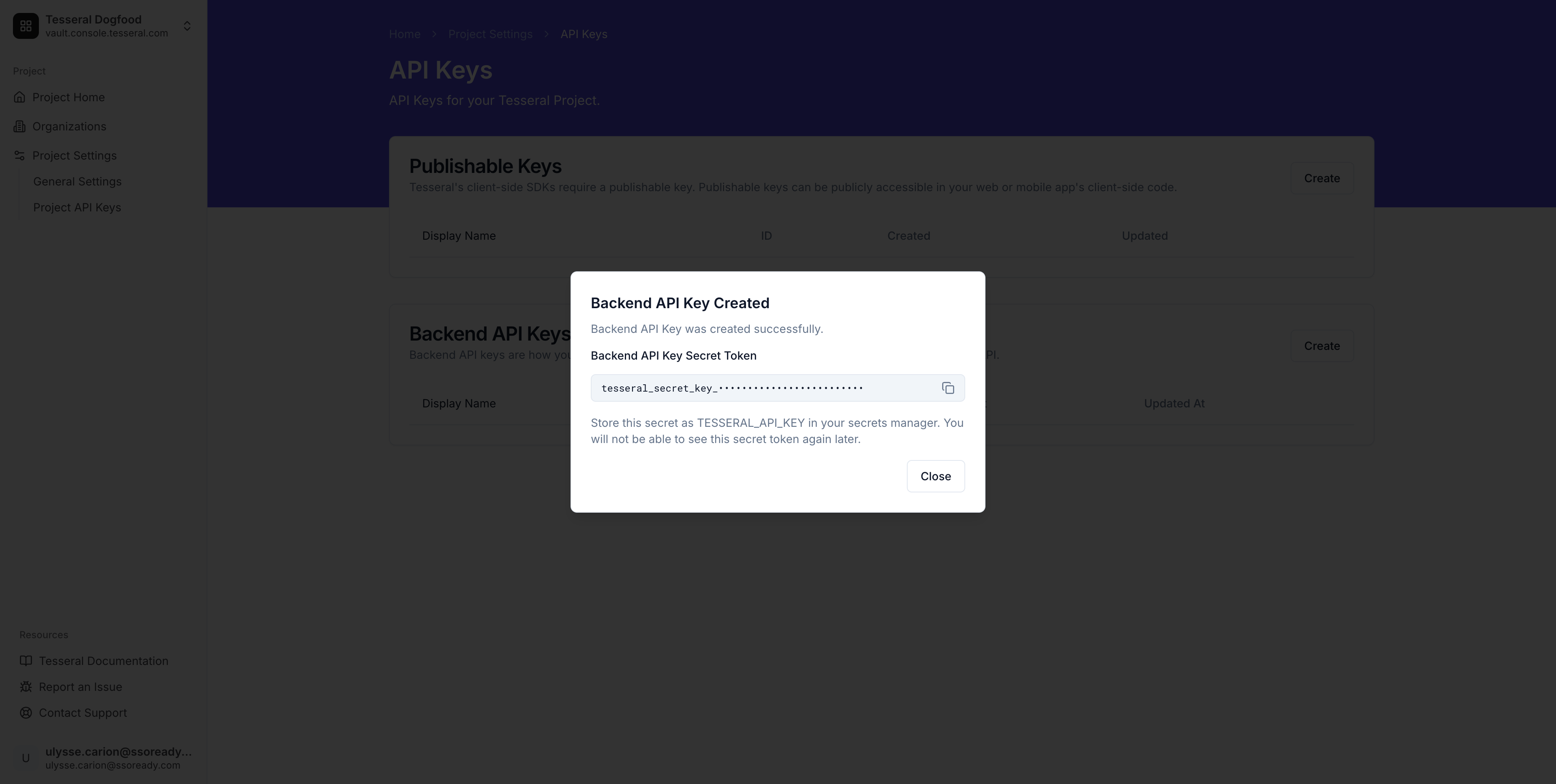Tesseral Backend API Reference
The Tesseral Backend API allows you to automate any operation you could otherwise do by hand from the Tesseral Console.
Tesseral Backend API vs Tesseral Frontend API
The Tesseral Backend API is an automated alternative to clicking around in the Tesseral Console. It is meant to be used from your serverside code, or from scripts on your developer’s machines.
The Backend API requires a Backend API Key, which are secret and must not be put into clientside code. The Backend API lets you take actions across all Organizations in your Project.
If instead your goal is to take action on behalf of one of your Users from your clientside code, then you likely want the Frontend API instead. The Frontend API is much less sensitive than the Backend API.
Authenticating to the Backend API

All requests to the Backend API require a Backend API Key, which you can create by following these steps:
-
Sign in to the Tesseral Console.
-
Make sure you’re in the Project you want to work with. You can switch between Projects using the Project Switcher at the top left of the Console. Go to your Project’s API Keys Settings, and create a new Backend API Key.
-
When your Project API Key is created, you’ll be given a chance to copy your Project API Key Secret Token. Keep this secret somewhere safe; it is sensitive.
You now have a Backend API Key Secret Token, which starts with:
If you’re using one of Tesseral’s Backend API
SDKs, then put this secret into an environment
variable named TESSERAL_BACKEND_API_KEY.
If you’re using Tesseral’s Backend API using a plain HTTP client, then include
the secret token as an Authorization: Bearer token:
Tesseral Backend API SDKs
Tesseral provides three SDKs for the Tesseral Backend API:
-
The Tesseral Node SDK is a serverside TypeScript wrapper around the Tesseral Backend API. The Tesseral Node SDK is compatible with Node.js and Node.js-compatible runtimes, such as Bun and Deno.
-
The Tesseral Python SDK is a Python wrapper around the Tesseral Backend API. It supports both sync and async I/O, and is thoroughly
typing-annotated. -
The Tesseral Go SDK is a Golang wrapper around the Tesseral Backend API.
You can also use the Tesseral Backend API directly with cURL or any other HTTP client.